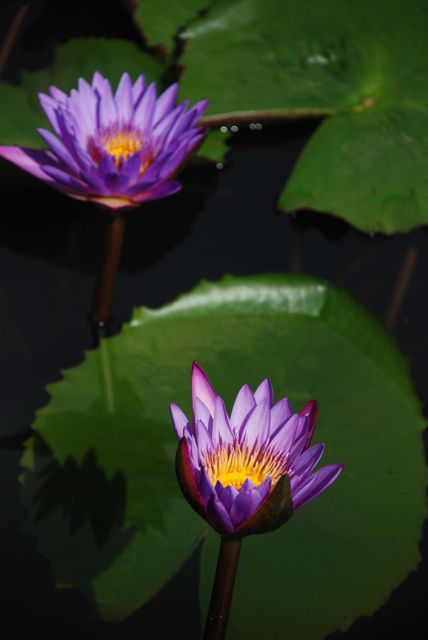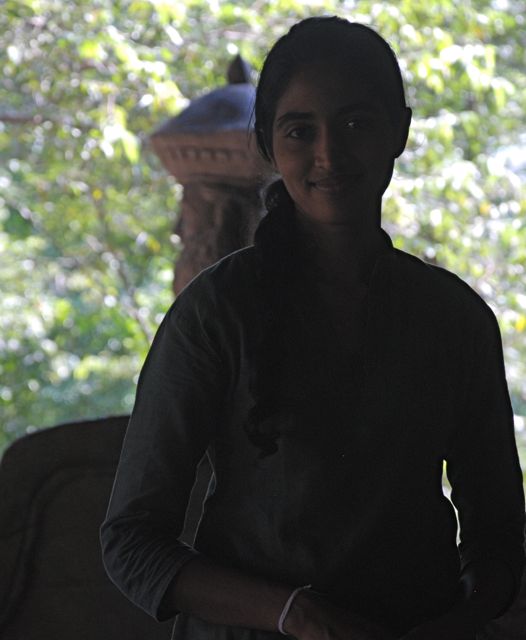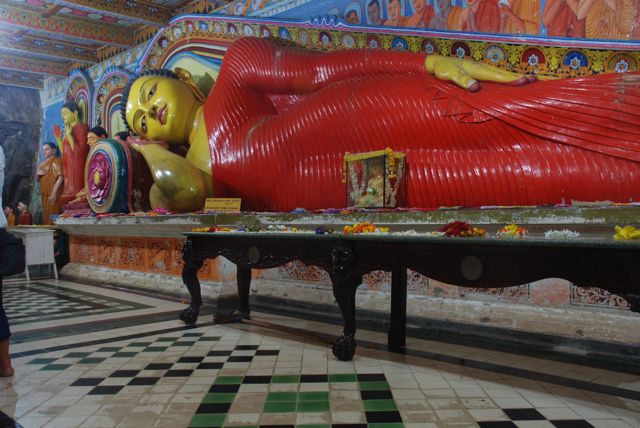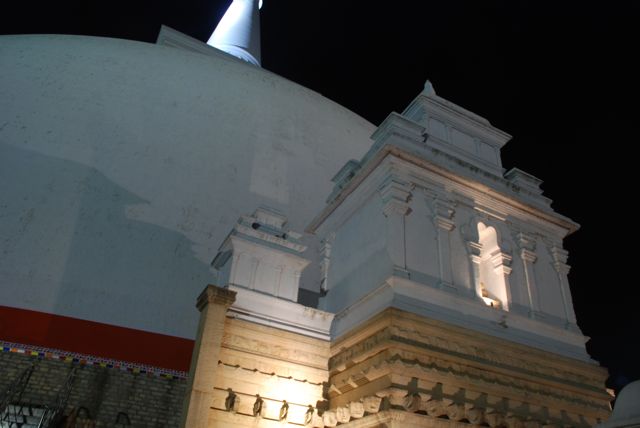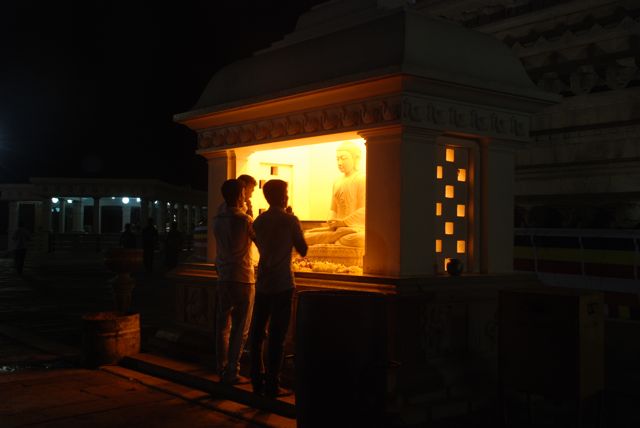I’ve been moving through Sri Lanka for a week now and thought I’d communicate some impressions. Colombo is where travelers arrive. Colombo, looking back, is not a charismatic city. I saw more men than women on the streets during the day, and after sunset it was rare to see a single women on the street. Is this Indian and Sri Lankan habit of controlling their women, keeping them at home after dark, a response to a cultural norm of predatory men locally, or is it something else? I don’t know, but it felt like a strange situation. Thailand is also Buddhist, but women are much more publicly visible there, so it can’t be the religion that is the cause. Colombo is a developing Asian capital and as such is chocked with traffic. The fumes weren’t as bad as other Asian capitals, I suppose as its much smaller than a city like Bangkok. I didn’t like Colombo though: it lacked charm and beauty. The photo above obviously shows one of the more attractive, shaded streets of the city.
After Colombo we traveled north, and then cut inland to the east. Soon the countryside was apparent, and the road was lined with warm jungle, and occasional tanks. ‘Tanks’ are water reservoirs which were constructed many centuries ago by previous Sri Lankan kings. While driving over a particular tank on a raised road we noticed a wetland full of bird life to the right. I yelled out ‘lets stop!’. We slowed to a halt and got out. I asked him to shut off the engine, and all of a sudden silence marked by bird song filled our ears, for the first time since arriving in Sri Lanka. I got out the binoculars, and walked to the edge of the road and looked off the embankment out onto the wetland.
Trees and copses of trees dotted the vista, with their ankles in a tea coloured water, while lillies grew on the shallows and up to my feet was a low ground cover with rows of purple flowers in bloom. The occaisonal three wheeler would pass disrupting the calm, but otherwise the sounds of exotic bird song came to my ears like a balm. I hadn’t slept much the previous night thanks to bombarding mosquitoes and a heat I had to endure as the doors and windows were kept in a vain attempt to keep the mosquitoes out (no nets or fly wire where I was sleeping). So I had been feeling particularly haggard. Then I raised the binoculars to my eyes. All of a sudden the great grey body of a Painted Stork came into razor sharp focus through the glass. I was immediately lost and absorbed into the slow, methodical lift of the Stork’s knees and feet and its careful placing of its next footsteps, surrounded by green life and beautiful lambent water. Its beak was prehistorically large and bulbar. The sounds coming through my ears were alien. I felt as if I was in timeless Ceylon, plunged into an alien and calm watery world. I was lost, absorbed in the moment and the delicate visual and aural intimacy I was experiencing. My spirits rose. I no longer felt haggard. I privately congratulated myself on having got myself here, for such an epiphany through the glasses by a warm, sunny south Asian wetland. Finally I had arrived in Sri Lanka.
Next we stopped, just out of idle curiosity at a place just before Anduradapura, called Forest Rock Garden Hotel (Andarawewa). It turned out to be a new eco-lodge constructed entirely on raised walkways and platforms running through the lowland woodland, covering a large area of many hectares, and done in the style of ancient kingdoms of the realm.
Stone work had been done imitating previous temples and was well suited to the landscape dotted with large granite boulders and outcrops. The paths wound through large boulders and we were lead on a tour of the property by a charming and beautiful young Sri Lankan girl. She spoke to Satis in Singalese, and for the first time the rapid syllables of that language sounded elegant and soft to my ears. High high cheek bones and soft green tunic were refined, and she certainly seemed like the spirit of the place.
As we walked over the walkways, we were at the level of the woodland canopy and above, so the bird life was close to us. Monkeys sometimes crashed through the understorey below, and apparently wild elephants often visit, and walk beneath the walkways. I felt as though I was truly in a green and wild lowland jungle of South Asia. It was drier and hotter than actual rainforest would be, and with the large granite boulders and variety of sun-repelling shiny leave in the canopy I could see the resemblance to some east African landscapes.
We continued on to Anuradhapura and found a place to stay. Our driver took us to see a sacred Buddhist place in the dying embers of the day, called Isurumuniya. It was two or three vast tall granite boulders, with two Buddhist grottoes built into it with image rooms and a large white dagoba to one side.
The moon studded the pale egg shell coloured sky, and we walked to the top of one of the boulders. The sound of Buddhist sutras being chanted came across the green landscape below us, rapidly thickening with shadows, and full of copses of trees, and rice fields. It was a warm night, and there were no white tourists to be seen, only the odd Sri Lankan pilgrim and their family, all wearing white. Finally we had come to the right place, and the ugly, chaotic, demeaned world of the city was only a memory. We walked into a temple with a giant wooden reclining Buddha painted in vibrant colours.
In a grotto at the far end, to the left in the above photo, abutting the granite boulder above, an patchwork of swifts nests chirped and piped, and as I walked closer I could see one particular dark swallow threading its saliva gluing straw into the nest structure. Clearly the Buddhists think that such living beings should be allowed to build their home here, close to the Buddha. Could you ever imagine the bishops of Western Christianity allowing birds to build a home so close to the alter in a cathedral? I couldn’t.
Next we visited Ruwanwelisaya, the most visited Buddhist stupa (called dagoba here) and circumambulated it bare foot amongst the white clad pilgrims. This dagoba was built in 140 B.C., long before Christianity was even a twinkle in the eye of a young Jewish revolutionary. Apart from a couple of monuments in ancient Egypt, this 103 metre tall dagoba and another one in the same Sri Lankan city, were the tallest human built structures in the ancient world for many centuries. Incense lapped the warm nights air, and the vast white dome above us commanded reverence and hushed calm in a way I can’t imagine St. Peter’s in Rome doing. I felt like I was walking back more than two thousand years into Buddhist history, and it was a hallowed feeling.


